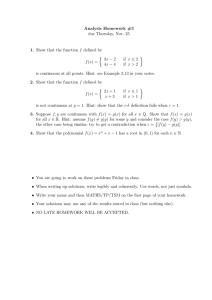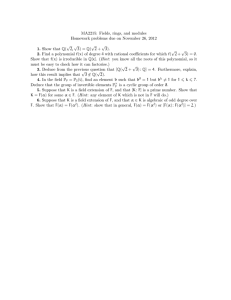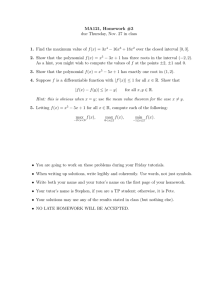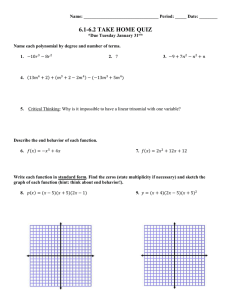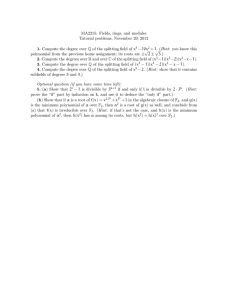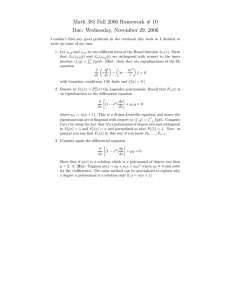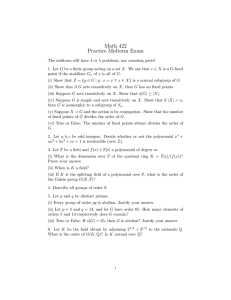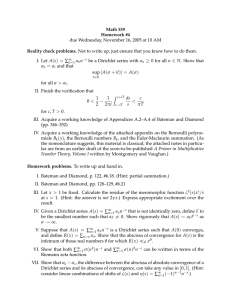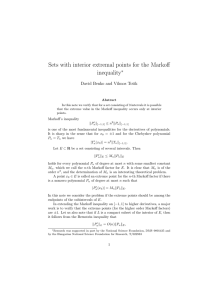Analysis Homework #3 Solutions 1. 2.
advertisement
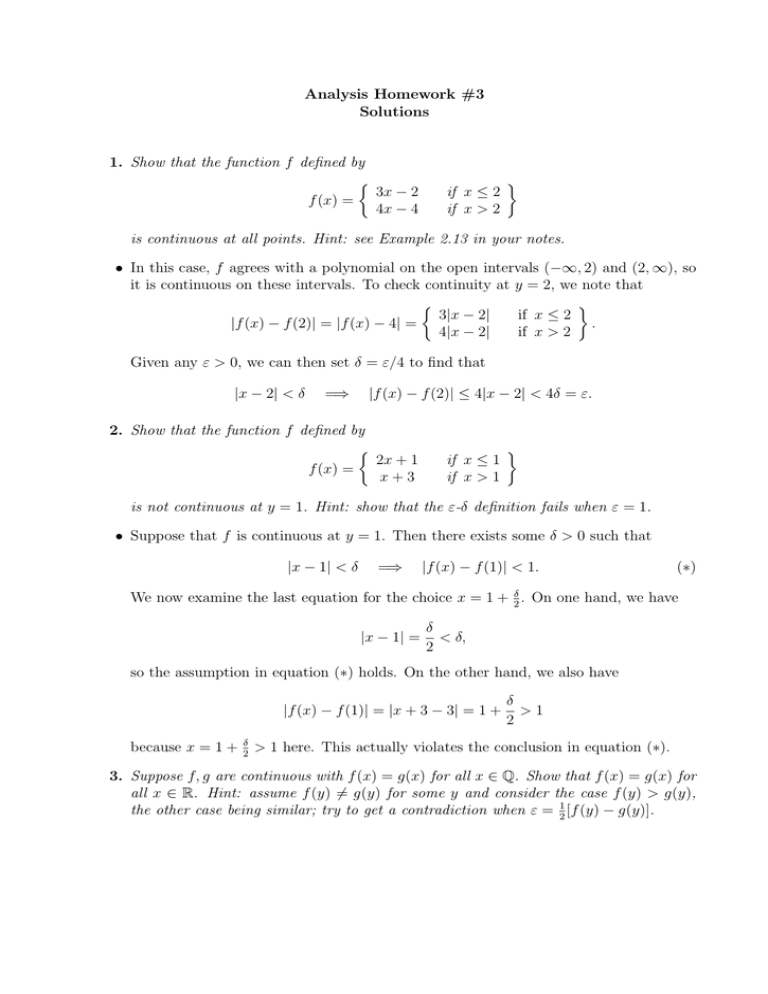
Analysis Homework #3
Solutions
1. Show that the function f defined by
{
3x − 2
f (x) =
4x − 4
if x ≤ 2
if x > 2
}
is continuous at all points. Hint: see Example 2.13 in your notes.
• In this case, f agrees with a polynomial on the open intervals (−∞, 2) and (2, ∞), so
it is continuous on these intervals. To check continuity at y = 2, we note that
{
}
3|x − 2|
if x ≤ 2
|f (x) − f (2)| = |f (x) − 4| =
.
4|x − 2|
if x > 2
Given any ε > 0, we can then set δ = ε/4 to find that
|x − 2| < δ
=⇒
|f (x) − f (2)| ≤ 4|x − 2| < 4δ = ε.
2. Show that the function f defined by
{
2x + 1
f (x) =
x+3
if x ≤ 1
if x > 1
}
is not continuous at y = 1. Hint: show that the ε-δ definition fails when ε = 1.
• Suppose that f is continuous at y = 1. Then there exists some δ > 0 such that
|x − 1| < δ
=⇒
|f (x) − f (1)| < 1.
(∗)
We now examine the last equation for the choice x = 1 + 2δ . On one hand, we have
|x − 1| =
δ
< δ,
2
so the assumption in equation (∗) holds. On the other hand, we also have
|f (x) − f (1)| = |x + 3 − 3| = 1 +
because x = 1 +
δ
2
δ
>1
2
> 1 here. This actually violates the conclusion in equation (∗).
3. Suppose f, g are continuous with f (x) = g(x) for all x ∈ Q. Show that f (x) = g(x) for
all x ∈ R. Hint: assume f (y) ̸= g(y) for some y and consider the case f (y) > g(y),
the other case being similar; try to get a contradiction when ε = 21 [f (y) − g(y)].
• Following the hint, we only deal with the case f (y) > g(y) and we set
ε=
f (y) − g(y)
> 0.
2
Since f is continuous at all points, there exists some δ1 > 0 such that
|x − y| < δ1
|f (x) − f (y)| < ε
=⇒
=⇒
−ε < f (x) − f (y) < ε.
Since g is continuous as well, there similarly exists some δ2 > 0 such that
|x − y| < δ2
=⇒
|g(x) − g(y)| < ε
=⇒
−ε < g(x) − g(y) < ε.
We now let δ = min{δ1 , δ2 } and we combine the last three equations to get
|x − y| < δ
=⇒
g(x) < g(y) + ε = f (y) − ε < f (x).
Using the assumption that f (x) = g(x) at all rationals, we conclude that
y−δ <x<y+δ
=⇒
g(x) < f (x)
=⇒
x∈
/ Q.
This means that there are no rationals between y − δ and y + δ, a contradiction.
4. Show that the polynomial f (x) = xn + x − 1 has a root in (0, 1) for each n ∈ N.
• Being a polynomial, f is continuous, and we also have
f (0) = −1 < 0,
f (1) = 1 > 0.
According to Bolzano’s theorem then, f must have a root in (0, 1), as needed.
